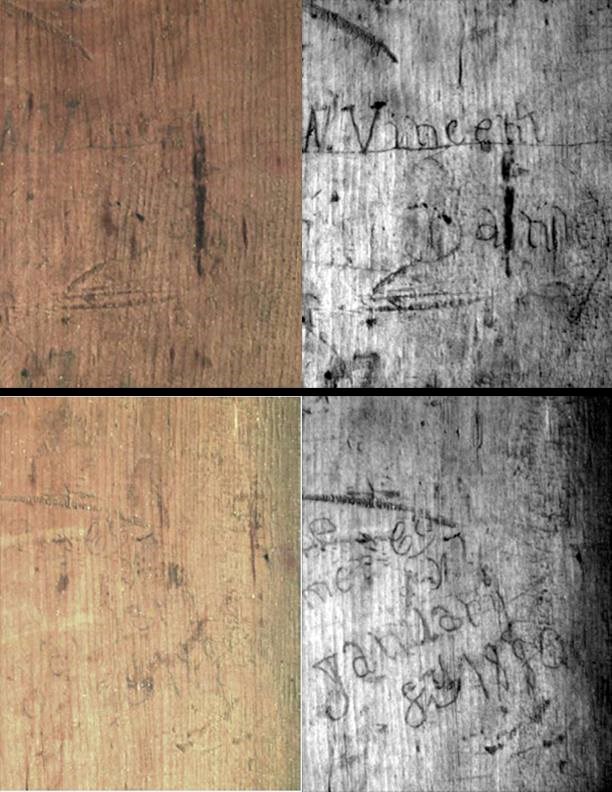Part of a series of articles titled Curious Collections of Fort Stanwix, The Oneida Carry Era.
Previous: Spanish Coins
Next: The 1st NY Orderly Book
Article


Left image
An image of the Herkimer desk before conservation work.
Credit: National Park Service
Right image
An image of the Herkimer desk after conservation.
Credit: National Park Service

National Park Service
This portable field desk once belonged to General Nicholas Herkimer of the Tryon County Militia and is on exhibit at Fort Stanwix thanks to a loan from Rome Historical Society. A "field desk" is the 18th Century equivalent to a modern laptop desk. It is likely that Herkimer's correspondence leading up to the Battle of Oriskany was written on this desk.
Like many objects on exhibit, this desk was treated by National Park Service conservators who carried out a series of procedures to stabilize its condition and restore it as close to the original appearance as possible. First, the desk’s condition was evaluated and all possible issues were recorded. These issues included dirt and grime covering much of its surfaces, worn and abraded edges, several sizable splits in the wood, corroded metal hinges, and missing molding.
During this evaluation process, conservators used high resolution infrared camera to photograph the desk’s top writing surface. These images (pictured second) revealed writing not before visible with the naked eye. This writing included the names “William Hennessy,” “George W. Vincent,” and the date “January 8, 1880.”
While this writing theoretically could have been done by Herkimer himself (writing a future date for an unknown reason). It is also much more probable that it stemmed from use following Herkimer’s death, as it was kept in the family for several generations more before being donated to the Rome Historical Society.
After the desk was evaluated, conservators set to work treating its many issues. The surface was delicately cleaned using various chemicals, taking great care to avoid any areas where the wood’s original finish was still present. The metal hinges were treated to stop any corrosion and then coated in a preserving wax. Finally, a special glue was injected into the desk’s many cracks in order to prevent them from expanding. Following the completion of the desk’s conservation treatments, it was placed on exhibit, where visitors can see it today.

National Park Service
Part of a series of articles titled Curious Collections of Fort Stanwix, The Oneida Carry Era.
Previous: Spanish Coins
Next: The 1st NY Orderly Book
Last updated: July 28, 2025